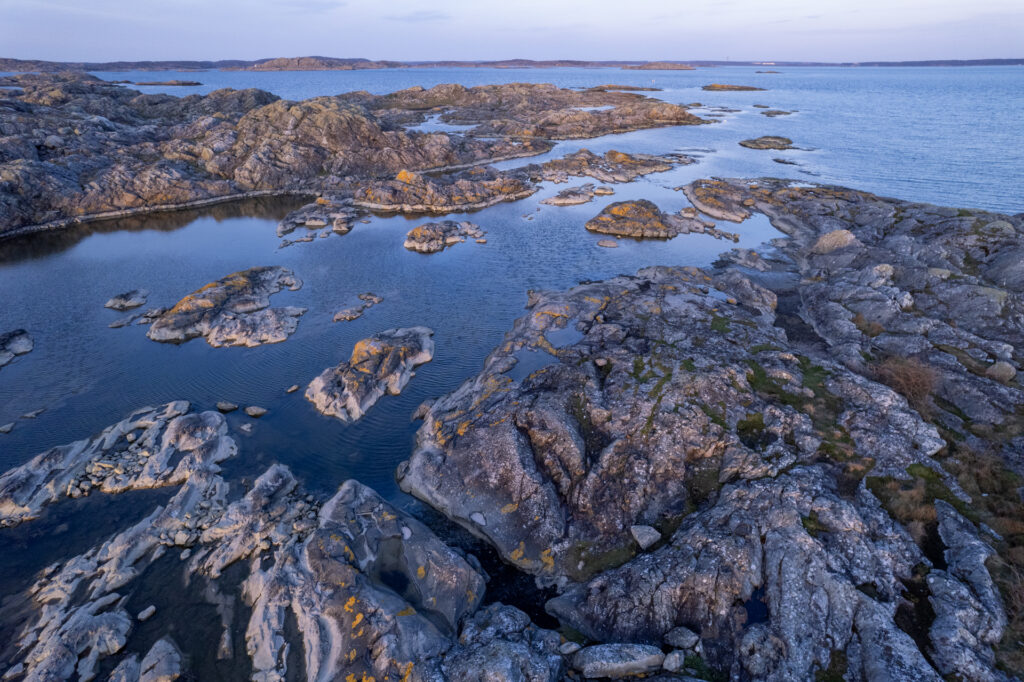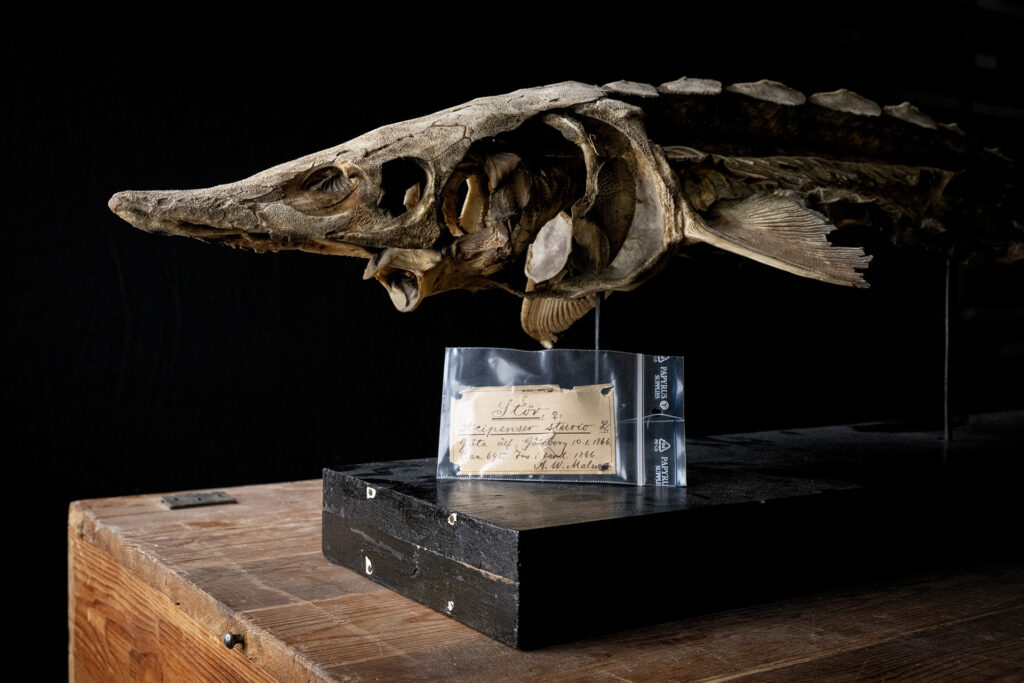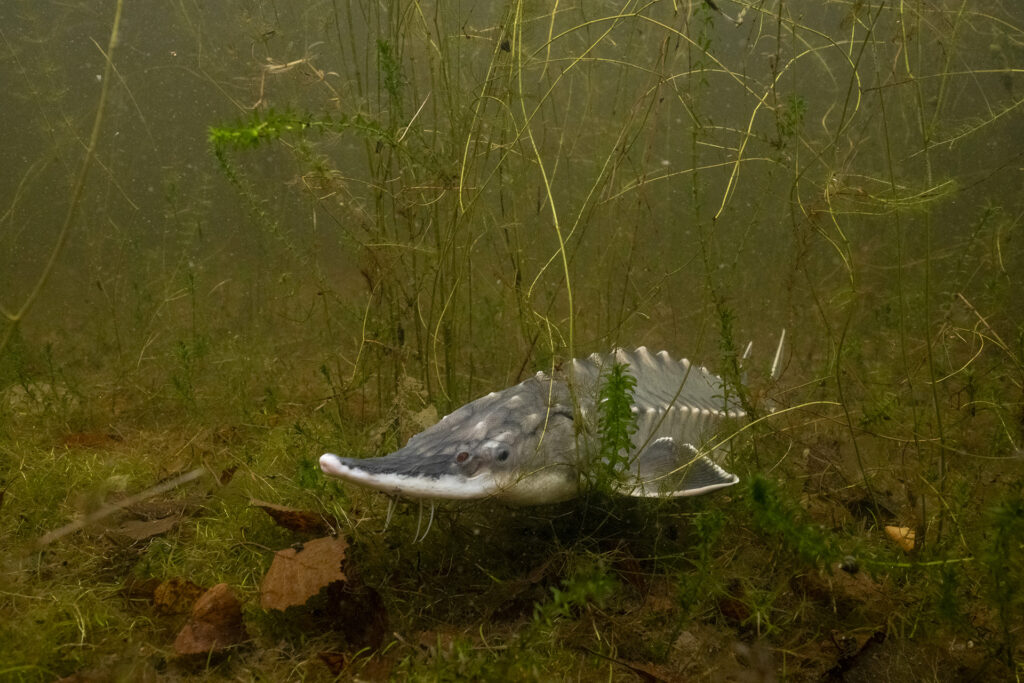The Atlantic sturgeon, a keystone species, was pushed to practical extinction in Europe in the midst of the 20th century. Supported by a grant from Rewilding Europe’s European Wildlife Comeback fund, a pioneering initiative has seen this iconic fish reintroduced in a Swedish river for the primary time ever.
Jon A. Juarez / Rewilding Europe
The sturgeon returns
A 42,000-euro grant from Rewilding Europe’s European Wildlife Comeback Fund has supported the first-ever reintroduction of Atlantic sturgeon (Acipenser oxyrinchus oxyrinchus) in Sweden. The “Return of the Sturgeon” initiative, which is managed by the Swedish Anglers Affiliation (Sportfiskarna), goals to re-establish the species within the Göta River – the biggest river in Sweden. A complete of 100 juvenile sturgeon, which had been translocated from a breeding facility within the village of Born auf dem Darß, on Germany’s Baltic coastline, have now been launched into the river close to Bohus Fortress, within the metropolis of Kungälv. At 10 months previous, the fish are 60 cm in size and weigh round 1kg.
“This can be a distinctive and extremely thrilling occasion,” says undertaking chief Linnéa Jägrud, who’s overseeing the Return of the Sturgeon initiative as a limnologist working for the Swedish Anglers Affiliation. “The reintroduction of a regionally extinct species may be very unusual in Sweden. I’m trying ahead to the day after we can take a look at the river and say ‘there are Atlantic sturgeon spawning under the floor right here’.”

Jon A. Juarez / Rewilding Europe
Maximising the possibilities of restoration
The Göta River contained spawning populations of Atlantic sturgeon till the beginning of the 20th century. However the species then grew to become domestically extinct, primarily on account of overfishing and deteriorating water high quality. The Göta River contained spawning populations of Atlantic sturgeon till the beginning of the 20th century. However the species then grew to become domestically extinct, primarily on account of overfishing and deteriorating water high quality. Historic specimens of Atlantic sturgeon on the Gothenburg Museum of Pure Historical past, which had been taken from the Göta, point out that the species as soon as existed and spawned within the river. As three of those specimens are juveniles – and juvenile sturgeon are unable to outlive in salt water – that is proof that the fish hatched within the river previously.
As we speak, the water high quality within the Göta has improved and the river system is comparatively biodiverse, with a variety of habitats. Previous to reintroduction, spawning habitats and meals sources appropriate for Atlantic sturgeon had been recognized over a sufficiently giant space. The reintroduced sturgeon will not be anticipated to remain within the river by their complete life, however will migrate to the estuary, and finally the ocean, after they develop the next salinity tolerance with growing age and dimension. The juvenile sturgeon had been initially saved in riverside swimming pools to permit them to acclimatise to their new aquatic surroundings.

Jon A. Juarez / Rewilding Europe
An ecologically vital ambassador
The Atlantic sturgeon, which is also called the Baltic sturgeon, is a species of sturgeon native to Europe and North America. This can be a actually spectacular fish, which might stay for 90 years or extra. Specimens with lengths over 4 metres and weights of over 350 kg have been recorded, though they sometimes develop to between 1.8 and a couple of.4 metres in size. Relatively than having true scales, the Atlantic sturgeon has 5 rows of bony plates often known as scutes, with a coloration starting from bluish-black and olive inexperienced on the again, to white beneath. They’ve late sexual maturity (as much as 15 years) and spawn at low frequencies (as much as as soon as each 5 years).
Sturgeon are each keystone and indicator species, taking part in a necessary function sustaining the well being and stability of aquatic ecosystems. Utilizing their slender, tapered heads to forage for insect larvae and crustaceans, they naturally disturb riverbeds, enhancing oxygenation, shifting natural matter alongside waterways, and creating spawning grounds for smaller fish. Additionally they act as hosts for species similar to lampreys and freshwater pearl mussels, and eat invasive species that might in any other case disrupt pure meals webs. They depend upon an interlinked community of habitats that present them with appropriate circumstances for feeding, migrating and spawning, and are delicate to adjustments in water temperature, oxygen ranges, and different environmental elements.
“The sturgeon can develop into an emblem for the general well being of the Göta River,” says Linnéa Jägrud. “Will probably be an ecological ambassador for the river.”

Jon A. Juarez / Rewilding Europe
Funding assist
The sturgeon reintroduction is being carried out in collaboration with the College of Gothenburg, the Swedish College of Agricultural Sciences, and the Gothenburg Museum of Pure Historical past, in addition to sturgeon specialists from the German Leibniz-Institute for Freshwater Ecology and Inland Fisheries in Berlin. The institute, which is taken into account the main European authority on the ecology of the Atlantic sturgeon, has labored for a few years on reintroduction efforts.
The cash from the European Wildlife Comeback Fund grant was used to finance a variety of prices, together with the translocation of the sturgeon from Germany, and lodging for researchers and volunteers concerned in tagging the fish earlier than their launch.
“Reintroducing Atlantic sturgeon in Sweden after an absence of greater than a century is a big milestone,” says Rewilding Europe’s rewilding supervisor Sophie Monsarrat. “I’m so happy the fund was in a position to assist this launch. There’s an pressing want to revive the performance of terrestrial, freshwater, and marine ecosystems throughout Europe by bringing again keystone species.”

Jon A. Juarez / Rewilding Europe
Scaling up
Like many different sturgeon species, the Atlantic sturgeon can tolerate a variety of salinities, spending most of their lives in saltwater, however migrating up rivers to spawn. Tagging and genetic analysis has proven that sturgeons will use the identical breeding rivers for years, returning to the river the place they had been born.
Previous to their launch into the Göta River, the juvenile sturgeon had been fitted with acoustic transmitters, enabling them to be tracked in European waters by way of the European Monitoring Community. Within the river and coastal space outdoors the estuary, monitoring efforts will present invaluable perception into the motion and behavior of the fish, enabling additional reintroduction efforts to be enhanced.
Transferring forwards, the goal is to reintroduce extra sturgeon into the Göta River yearly.
“I want to launch not less than a number of thousand juveniles, as a result of there will probably be excessive mortality,” explains Linnéa Jägrud. “The perfect state of affairs can be to determine a rearing facility right here in Sweden. This may enhance the possibilities of the sturgeon returning right here to breed. We would like them to really feel that the Göta is their house.”

Jon A. Juarez / Rewilding Europe
The larger image
The primary vary of the Atlantic sturgeon is in jap North America, extending from southern Canada to Florida. Their abundance has declined massively right here, with the species now thought-about weak on a world scale. A separate inhabitants, which scientists imagine migrated throughout the Atlantic round 10,000 years in the past, had a historic distribution in northern Europe, together with the Baltic Sea area. Nonetheless, a mix of overfishing, the channelisation and damming of rivers, and air pollution, noticed the species develop into functionally extinct in Europe throughout the second half of the 20th century.
In Europe, the Atlantic sturgeon is now protected by the EU Habitats Directive and three different worldwide agreements. Efforts to reintroduce Atlantic sturgeon have been carried out in Europe since 1996, with American donor populations used on account of genetic similarities. The Oder River, the final main river in Germany and Poland the place sturgeon and different animals can migrate unhindered over lengthy distances, has been a spotlight space for the reintroduction of the species since 2006, following the translocation of brood shares from the St. John’s River in Canada. In 2024, 600 sturgeon had been launched into the river close to the city of Criewen. Different reintroduction initiatives have taken place on the Vistula (Poland), Nemunas (Lithuania), Pärnu (Estonia), and Narva (Estonia).
Let’s rewild collectively
The agile setup of the European Wildlife Comeback Fund is designed to assist wildlife comeback in a handy and versatile manner. Rewilding Europe invitations different initiatives working to reintroduce keystone species in European landscapes to think about making use of for a grant.
“The grant we obtained was simple to entry and has been extremely useful,” says Linnéa Jägrud. “It has been nice to work with Rewilding Europe. I might like to see the Göta River and adjoining coastal space develop into a part of a larger marine rewilding panorama.”
These keen on contributing to wildlife restoration in Europe can assist wildlife comeback with an internet donation. In case you’d like to take a position greater than 50,000 euros within the European Wildlife Comeback Fund, we’d like to get in contact with you personally.
















![7 Unmissable Cyclades Sunsets [With Video]](https://i1.wp.com/jaywaytravel.com/wp-content/uploads/2023/04/adr_gr_cyclades_santorini_20221022_0685.jpg?w=100&resize=100,70&ssl=1)

